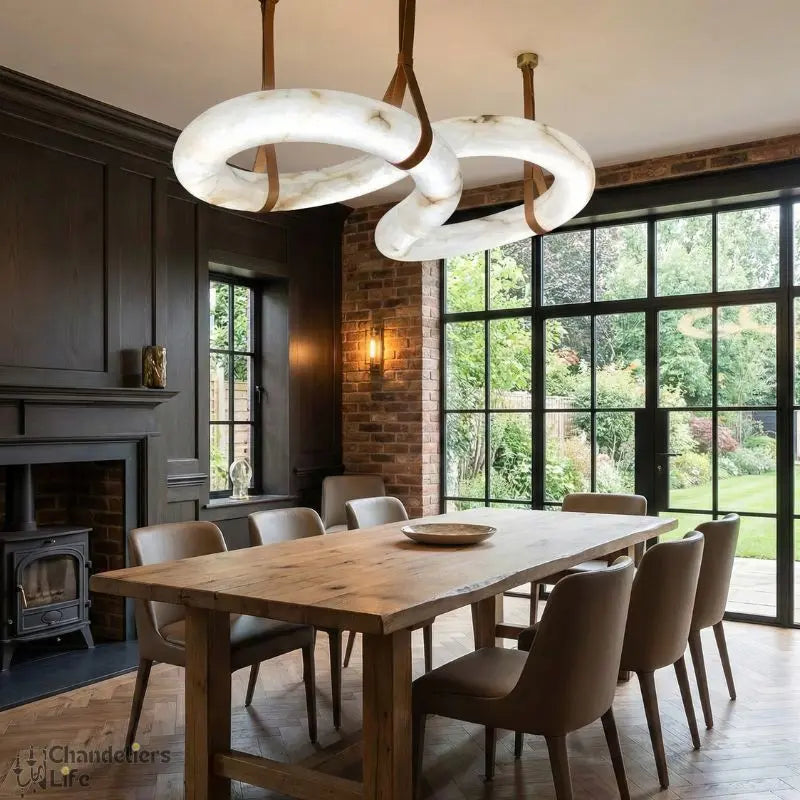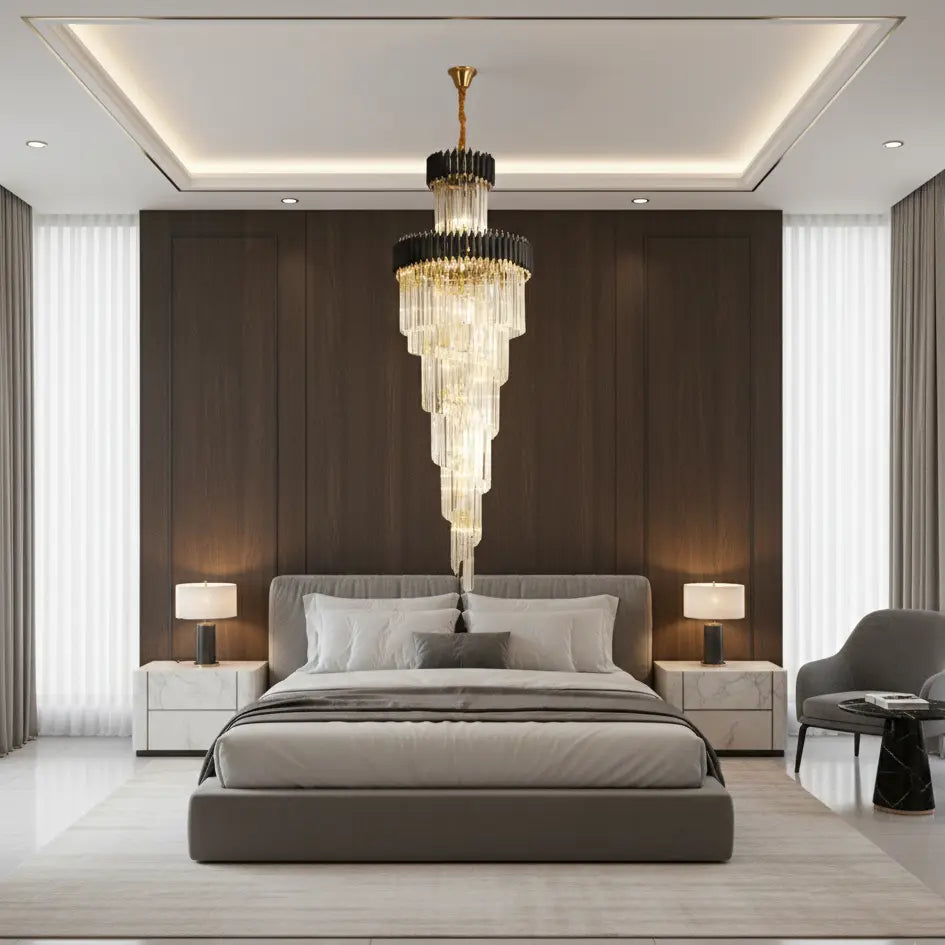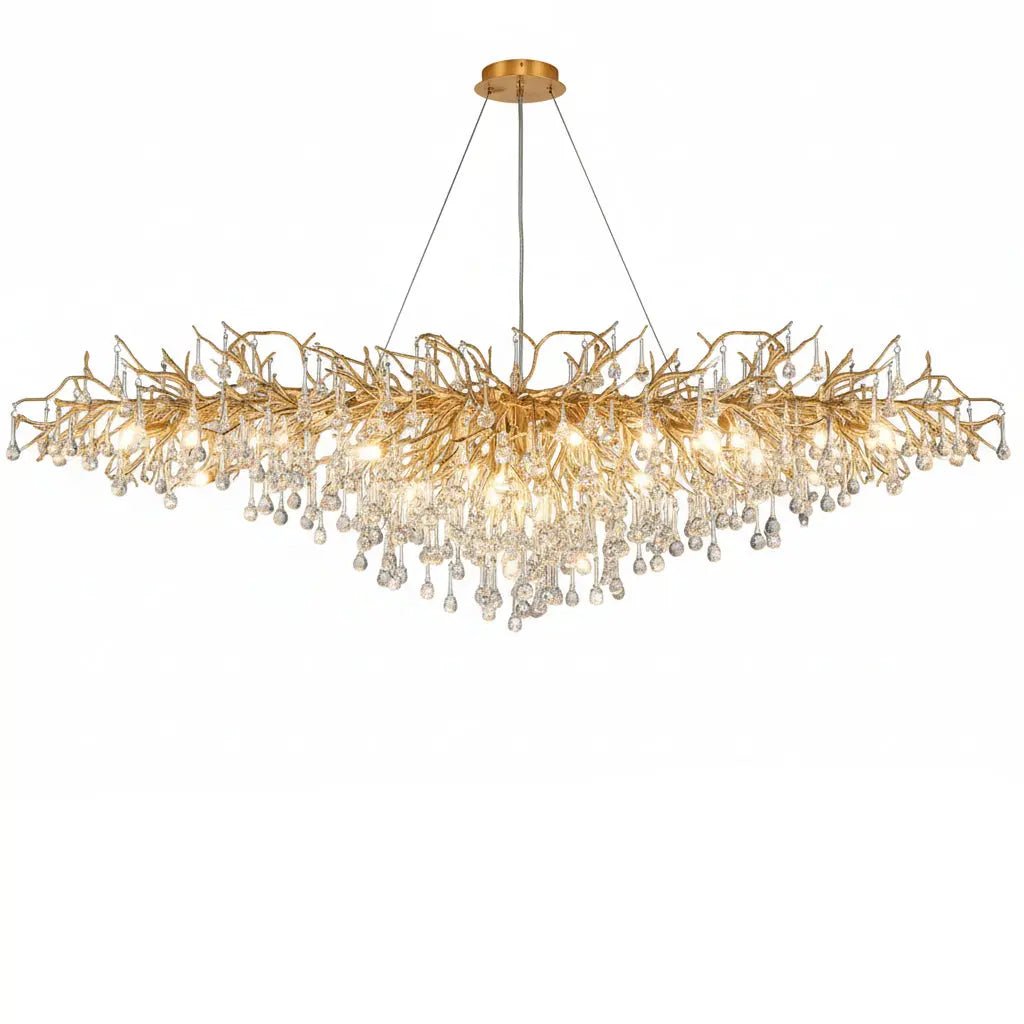Lighting in commercial spaces isn't just about visibility; it's about creating an environment that enhances the experience for everyone. From strategic placement to energy efficiency, the right lighting can transform a space. This article covers expert tips on maximizing the impact of commercial spotlights.
Key Takeaways
- Strategic lighting placement can highlight key features and improve safety.
- Layering different types of lighting creates versatile and functional spaces.
- Natural light should be maximized and balanced with artificial light.
- Choosing energy-efficient fixtures and bulbs can save money and reduce environmental impact.
- Advanced lighting controls like dimmers and motion sensors enhance efficiency and convenience.
Strategic Placement for Maximum Impact
Highlighting Key Architectural Elements
Spotlights can be used to draw attention to important architectural features. By focusing light on these elements, you can create a visually appealing environment that highlights the unique aspects of your space. This technique not only enhances the aesthetic appeal but also adds depth and dimension to the area.
Guiding Occupants with Wayfinding
Strategic lighting helps guide people through a space. Spotlights can highlight key areas like seating nooks, restrooms, and exits, making it easier for occupants to navigate. Lighting along pathways also aids in wayfinding, acting as intuitive cues that direct movement.
Enhancing Safety and Accessibility
Good lighting improves visibility, which is crucial for safety. Eliminating shadows and dark spots ensures that people can move around safely. Proper illumination in entryways, hallways, and stairwells not only deters crime but also helps those with vision impairments. This makes the space more accessible and welcoming for everyone.
Thoughtful lighting design can transform a space, making it both beautiful and functional. By strategically placing lights, you can highlight key features, guide occupants, and enhance safety and accessibility.
Layering Lighting for Versatility
Layering lighting is a powerful technique to create versatile and adaptable spaces. By combining different types of lighting, you can achieve a balance between functionality and aesthetics, making any commercial space more inviting and efficient.
Combining Ambient, Task, and Accent Lighting
Interior designers often recommend a three-tiered lighting system:
- Ambient Lighting: This provides overall illumination for a space, often through ceiling-mounted fixtures. It ensures the area is fully lit with a general wash of light.
- Task Lighting: As the name suggests, task lighting helps with specific tasks. This can include pendant lights, under-cabinet fixtures, or other directional lighting to illuminate work areas.
- Accent Lighting: Accent lighting highlights key architectural details, displays, or artwork. Spotlights and directional fixtures create drama through strategic illumination.
By layering these types of lighting, you can create a space that is both functional and visually appealing.
Creating Flexible and Customizable Spaces
Using multiple light sources allows for flexibility and customization. You can adjust the lighting to suit different tasks, activities, and times of day. For example, brighter lighting can be used during work hours, while softer lighting can create a more relaxed atmosphere in the evening.
Balancing Aesthetic and Practical Needs
A well-designed lighting plan balances aesthetic and practical needs. Proper illumination ensures that the space is not only beautiful but also functional. This balance is crucial for creating an environment that is both inviting and efficient.
Thoughtful lighting design transforms commercial spaces, making them more enjoyable and navigable. By layering different types of lighting, you can create a dynamic and versatile environment that meets the needs of both occupants and visitors.
Leveraging Natural Light
Maximizing Window and Skylight Use
To make the most of natural light, maximize window size and keep them clear of obstructions. Consider adding skylights or solar tubes to bring in more daylight from above. This not only brightens up the space but also reduces the need for artificial lighting.
Using Light-Colored Finishes for Better Diffusion
Using light-colored finishes on walls, floors, and ceilings can help diffuse natural light throughout the room. White or off-white paint can make a big difference in how light spreads, making the space feel brighter and more open.
Balancing Natural and Artificial Light
It's important to find a balance between natural and artificial light. When there's enough sunlight, dim or turn off artificial lights to save energy. Automated lighting controls can help manage this balance, ensuring that you make the most of available natural light.
Choosing the Right Fixtures and Bulbs
Selecting Energy-Efficient Options
When choosing fixtures and bulbs, it's important to consider energy efficiency. LED bulbs are a top choice because they offer the best energy savings and have a long lifespan. They come in various brightness levels and color temperatures, making them versatile for different settings. Fluorescent tubes are also common in large areas, providing bright and diffuse light. Halogen lamps, known for their high color rendering index (CRI), are ideal for display lighting where color accuracy is crucial.
Understanding Color Rendering and Temperature
Color temperature and CRI are key factors in selecting the right lighting. Bulbs with lower Kelvin ratings (around 2700K) emit a warm, yellowish light, while those with higher ratings (5000K) produce a cool, blue/white light. Warmer lights are soothing and great for ambient lighting, while cooler lights boost energy and productivity. The CRI measures how accurately a light source displays colors, with ratings above 90 being the best for showing true colors without distortion.
Considering Longevity and Maintenance
When selecting lighting fixtures, it's essential to think about their longevity and maintenance needs. LED fixtures are a great option because they last longer and require less maintenance compared to traditional lighting. Regular cleaning and maintenance can extend the lifespan of lenses and prevent discoloration. If lenses become damaged or discolored, consider replacing them or upgrading to LED fixtures for improved durability and longevity.
Choosing the right fixtures and bulbs can significantly impact the ambiance, functionality, and energy efficiency of a space. By understanding the different options and their benefits, you can make informed decisions that enhance both comfort and style while saving on electricity bills.
Implementing Advanced Lighting Controls
Using Dimmers for Ambiance and Efficiency
Dimmers are a simple yet effective way to control the lighting in a commercial space. They allow you to adjust the brightness to suit different activities and times of day. Using dimmers can significantly reduce energy consumption by lowering the light levels when full brightness is not needed. This not only saves energy but also extends the life of your bulbs.
Incorporating Motion Sensors and Timers
Motion sensors and timers are essential for optimizing energy use. Motion sensors detect when a room is occupied and adjust the lighting accordingly, while timers can be set to turn lights on or off at specific times. This ensures that lights are only used when needed, reducing waste. For example, setting lighting controls to vacancy mode can prevent lights from turning on in empty rooms, further saving energy.
Automating Lighting with Smart Controls
Smart lighting controls offer advanced features like remote access and automation. These systems can be programmed to adjust lighting based on various factors, such as the time of day or the amount of natural light available. This level of control not only enhances user convenience but also maximizes energy efficiency. Modern smart controls can even integrate with other building systems for a more cohesive and efficient operation.
Implementing advanced lighting controls can lead to significant energy savings and improved user satisfaction. By leveraging technology, businesses can create a more sustainable and efficient lighting system.
Designing for Specific Commercial Spaces
Optimizing Office Environments
When designing lighting for office spaces, it's crucial to focus on enhancing productivity and comfort. LED panel lights are a popular choice due to their even distribution and minimal glare. Additionally, incorporating task lighting at workstations can help reduce eye strain and improve focus. Consider using commercial LED ceiling lights for office spaces to achieve energy efficiency and cost savings.
Enhancing Retail and Hospitality Spaces
In retail and hospitality settings, lighting plays a significant role in creating an inviting atmosphere. Use accent lighting to highlight merchandise and key architectural elements. This not only draws attention to products but also enhances the overall aesthetic of the space. For restaurants and hotels, consider using dimmable lights to create a cozy and adaptable ambiance.
Improving Industrial and Warehouse Lighting
Industrial and warehouse spaces require robust lighting solutions to ensure safety and efficiency. High bay LED lights are ideal for these environments as they provide bright, uniform illumination. Additionally, incorporating motion sensors can help save energy by ensuring lights are only on when needed. Proper lighting in these spaces can significantly improve visibility and reduce the risk of accidents.
Thoughtful lighting design can transform commercial spaces, making them more functional and appealing. By choosing the right fixtures and incorporating advanced controls, businesses can create environments that meet both aesthetic and practical needs.
Prioritizing Energy Efficiency and Sustainability
Investing in LED Technology
Switching to LED lighting is a smart move for any commercial space. LEDs use less energy and last much longer than traditional bulbs. They can shine for tens of thousands of hours, making them a cost-effective choice. Plus, they offer better light quality, which is great for both workers and customers.
Utilizing Intelligent Lighting Systems
Smart lighting systems can adjust based on the time of day or if someone is in the room. This helps save energy and makes the space more comfortable. For example, occupancy sensors can turn off lights when no one is around, cutting down on wasted electricity.
Reducing Environmental Impact
Using eco-friendly home decor ideas and energy-efficient lighting can greatly reduce a building's carbon footprint. This not only helps the environment but also meets sustainability goals. Simple changes like these can make a big difference in the long run.
Making small adjustments in lighting and decor can lead to significant energy savings and a more sustainable future.
Making your home energy-efficient and eco-friendly is more important than ever. By choosing sustainable lighting options, you not only save on energy bills but also help protect our planet. Visit our website to explore a wide range of eco-friendly chandeliers and lighting solutions that suit every style and budget. Let's work together to create a greener future!
Conclusion
In conclusion, lighting is more than just a way to brighten up a space; it's a powerful tool that can transform commercial environments. By carefully planning and strategically placing different types of lighting, businesses can create spaces that are not only visually appealing but also functional and safe. From enhancing productivity to ensuring safety and promoting energy efficiency, the right lighting choices can make a significant impact. Remember, investing in quality lighting solutions and considering factors like natural light, energy efficiency, and the specific needs of each area can lead to long-term benefits. So, take the time to assess your lighting needs and make informed decisions to maximize the impact of your commercial lighting.
Frequently Asked Questions
What is the best way to use spotlights in a commercial space?
The best way to use spotlights in a commercial space is to highlight key areas like architectural features, merchandise, or important pathways. This not only enhances the visual appeal but also helps guide occupants and improve safety.
How can I make my commercial lighting more energy-efficient?
To make your commercial lighting more energy-efficient, consider using LED bulbs, installing dimmers, and using smart controls like motion sensors and timers to reduce wasted energy.
What are the benefits of layering different types of lighting?
Layering different types of lighting, such as ambient, task, and accent lighting, creates a versatile and flexible lighting environment. It allows you to customize the lighting to meet different needs and activities.
Why is natural light important in commercial spaces?
Natural light is important because it enhances the mood and productivity of occupants. It also reduces the need for artificial lighting, which can save energy and lower electricity bills.
How can I balance natural and artificial light in my commercial space?
You can balance natural and artificial light by maximizing the use of windows and skylights, using light-colored finishes to reflect light, and installing dimmable fixtures to adjust artificial light levels based on the amount of natural light available.
What should I consider when choosing light fixtures and bulbs?
When choosing light fixtures and bulbs, consider energy efficiency, color rendering, and temperature. Also, think about the longevity and maintenance needs of the fixtures to ensure they are cost-effective in the long run.









































